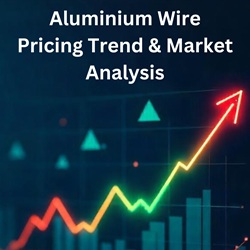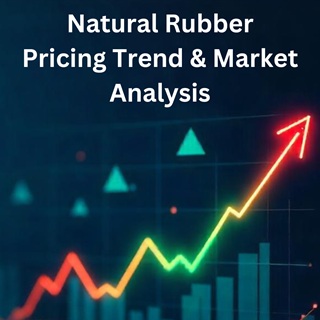
Aluminium Wire Pricing Trend in 202
The aluminium wire market has seen consistent demand growth over the past few years, with projections for 2025 indicating that this trend will continue. Aluminium wire plays a vital role in various industries, from the construction and automotive sectors to power transmission and electronics. As we look toward 2025, understanding the factors that will influence the pricing of aluminium wire becomes increasingly important for businesses involved in its production, distribution, and use.
The Importance of Aluminium Wire in Today’s Industries
Aluminium wire is primarily known for its excellent electrical conductivity, lightweight properties, and cost-effectiveness. It is widely used in power transmission lines, electrical cables, and even in applications that require strength with reduced weight, such as automotive wiring systems, especially for electric vehicles (EVs). Aluminium is replacing copper in many applications due to its more affordable price and the growing demand for lighter, more efficient materials in industries like construction, automotive, and renewable energy.
As industries continue to grow and adopt cleaner, more energy-efficient solutions, the need for aluminium wire in applications like electric vehicles, solar energy systems, and power grids is on the rise. These industries are pushing the demand for aluminium wire, which will play a crucial role in shaping pricing trends in 2025.
Key Factors Affecting Aluminium Wire Prices in 2025
1. Rise of Electric Vehicles and Green Technology
The electric vehicle market is one of the key drivers of aluminium wire price trends in 2025. With governments across the world pushing for green transportation solutions to reduce carbon emissions, electric vehicles have become a rapidly growing market. EV manufacturers require large quantities of aluminium wire for wiring electric motors, battery systems, and charging stations.
The increased production of EVs, especially in major markets such as North America, Europe, and Asia, is expected to create significant demand for aluminium wire. In addition, many automotive manufacturers are adopting aluminium wire as a lightweight alternative to copper, helping to improve the energy efficiency of electric vehicles.
Renewable energy projects, including solar and wind farms, also require substantial amounts of wiring to efficiently carry and distribute power. As more countries adopt renewable energy solutions to meet their climate goals, the demand for aluminium wire in the energy sector will continue to rise, driving prices higher.
2. Raw Material Costs and Supply Chain Concerns
The price of aluminium wire is closely tied to the price of its raw material—aluminium, which is derived from bauxite. Changes in the price of bauxite, as well as the availability of aluminium production, will directly affect the pricing of aluminium wire. As global demand for aluminium continues to grow, issues related to the availability of raw materials can cause fluctuations in prices.
Moreover, the aluminium production process is energy-intensive, making energy prices another important factor influencing aluminium wire pricing. A rise in energy prices, especially in regions where aluminium production is concentrated, will result in higher production costs. These costs will likely be passed down to consumers in the form of higher aluminium wire prices.
3. Geopolitical Factors and Global Trade Dynamics
Geopolitical events have a significant impact on commodity prices, and aluminium is no exception. Major aluminium producers, such as China, the United States, and Russia, play a pivotal role in the global supply chain. Trade tariffs, sanctions, and restrictions on aluminium exports can disrupt the supply chain and lead to price volatility in the market.
For example, in the past, trade tensions between major economies have resulted in tariffs on aluminium, increasing costs for manufacturers and driving up prices. In 2025, the ongoing geopolitical situation will remain a factor to monitor, as any new trade disputes could impact global aluminium wire prices.
4. Technological Advancements in Aluminium Production
In recent years, advancements in aluminium production technologies have led to more energy-efficient methods of production and improved recycling processes. The increased emphasis on sustainable practices in aluminium manufacturing is likely to have an impact on pricing.
For example, the use of recycled aluminium in wire production can help lower the demand for newly mined bauxite, thus reducing production costs. In turn, this could help stabilize the cost of aluminium wire despite rising demand from other sectors.
5. Market Demand and Economic Conditions
Aluminium wire prices are also influenced by the overall demand for aluminium across different sectors. For instance, the construction and telecommunications sectors will continue to rely heavily on aluminium wire for building electrical infrastructure, further pushing the need for raw materials. Similarly, large-scale infrastructure projects in emerging markets will further support global demand.
Economic conditions in major economies such as the US, China, and the EU will also impact the demand for aluminium wire. A thriving economy boosts industrial production and infrastructure development, increasing demand for aluminium and, by extension, aluminium wire.
Price Forecast for 2025
In 2025, aluminium wire prices are expected to see a general increase due to the growing demand from electric vehicles and renewable energy projects. The raw material supply chain, energy prices, and geopolitical factors will also contribute to fluctuations in pricing, making it essential for businesses to closely monitor these developments.
To mitigate price volatility, companies may want to explore long-term contracts with suppliers, diversify their sourcing strategies, and keep an eye on technological advancements in the aluminium sector. By staying informed about market conditions and being proactive in securing supply chains, businesses can better navigate the aluminium wire pricing trends of 2025.
Aluminium wire pricing in 2025 will be influenced by a complex array of factors, including the growing demand from the electric vehicle and renewable energy sectors, raw material costs, energy prices, and geopolitical factors. Industry stakeholders should stay attuned to these trends and consider strategies to manage costs effectively in the face of potential price increases. By understanding the forces driving the market, businesses can position themselves for success in a rapidly evolving global economy.










